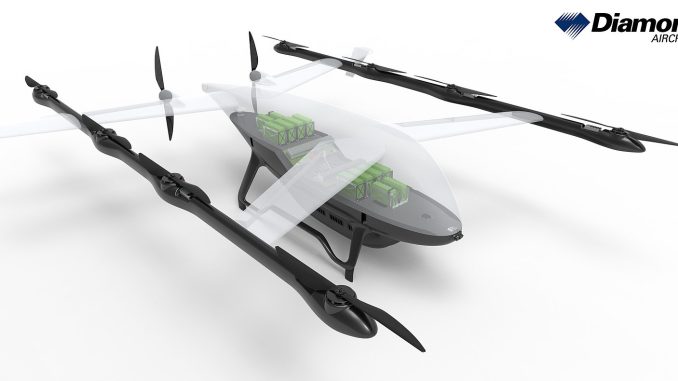
Diamond Aircraft is coordinating an Austrian Research Promotion Agency (FFG) funded project to advance understanding of gaseous hydrogen’s potential as a fuel source for hybrid powertrains in General Aviation.
The H2EDT (Hydrogen-based Twin-engine Electrification and Digitalization Testbed) project consortium – which unites researchers from FH JOANNEUM (Institute of Aviation and Electronic Engineering), TU Graz (ITnA), HyCentA and IESTA – is designing an experimental, hybrid testbed to explore the challenges hydrogen poses as a fuel for aviation. Research will continue at Diamond Aircraft’s Wiener Neustadt facilities until the end of 2025, including manufacturing and testing.
“The zero-emission profile of low temperature fuel cells and their quieter operation are among the reasons why this technology is gaining traction,” Diamond says. “In addition, hydrogen powertrains offer higher system-level energy density compared to purely electrical ones, allowing greater range and endurance for zero emission aircraft.
“However, relying on hydrogen alone for aircraft propulsion poses major challenges. These include the low power-to-weight ratio of hydrogen fuel cells – which would make them too heavy to cover peak power demands – and the storage of hydrogen, which requires significant volume due to its low density, within the limits of an aircraft airframe. Another challenge is the safety and certification aspect due to hydrogen’s propensity to leak and its low ignition energy, as well as safety challenges introduced by high pressure or cryogenic hydrogen storage systems.”
Consequently, the research team is implementing a hybrid hydrogen-electric architecture. They see this as key to leveraging both the high power density of batteries and the high energy density of the hydrogen fuel cell powertrain. This architecture also offers increased redundancy as an added benefit.
The testbed will be a scaled General Aviation platform and will include a fuselage, sets of independent batteries, hydrogen fuel cell and hydrogen storage system and up to 10 electric motors and propellers. The research team had originally planned to develop a testbed that mirrors powertrains typically used in a General Aviation twin-engine aircraft. However, given the fast-growing interest in Advanced Air Mobility, the team has adapted its design to enable testing of a VTOL (vertical takeoff and landing) platform with up to 10 motors.
The project uses a digital power management system, implemented via a power distribution board developed by FH JOANNEUM, as well as its ‘parallel’ hybrid architecture, where batteries and hydrogen fuel cells can both directly power any motor in the system. The H2EDT system leverages digital sensors and multiple power sources to automatically combine electric and hydrogen power as required.
A digital twin model developed in cooperation with TU Graz will be calibrated using test data and provide insights beyond the scope of the H2EDT testing. These will include simulations of failure modes and different environmental conditions, such as a high-altitude flight or high air temperatures.
The project also aims to define certification and design guidelines for a possible follow-up hydrogen project on a full-scale General Aviation platform such as a DA40 or a DA42. Certification and design challenges specific to hydrogen storage and distribution systems are also being investigated.
Presentation of the H2EDT results is anticipated for the first half of 2026.
For more information

